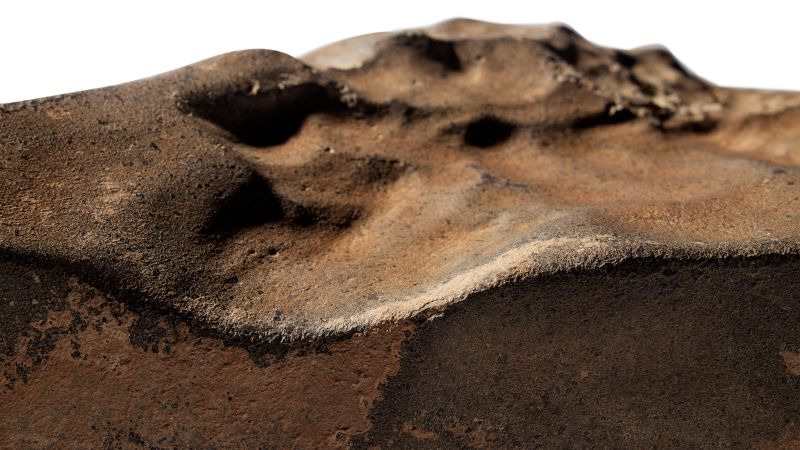A meteorite, identified as the largest known piece of Mars on Earth, is anticipated to fetch up to $4 million at an auction scheduled later this month. Known as NWA 16788, this extraordinary specimen weighs 54 pounds (24.5 kilograms), making it a colossal find compared to typical Martian meteorites, which are usually small fragments. This was announced by auction house Sotheby’s in a statement on Tuesday.
The meteorite, discovered in November 2023 in the remote Agadez region of Niger, is a “monumental specimen” approximately 70% larger than the next biggest piece of Mars ever found on Earth, according to Sotheby’s. Its rarity is underscored by the fact that only about 400 Martian meteorites have been discovered on our planet.
The Significance of NWA 16788
“NWA 16788 is a discovery of extraordinary significance — the largest Martian meteorite ever found on Earth, and the most valuable of its kind ever offered at auction,” stated Cassandra Hatton, vice chairman of science and natural history at Sotheby’s. “Weathered by its journey through space and time, its immense size and unmistakable red color sets it apart as a once-in-a-generation find,” she added.
The meteorite provides a tangible connection to Mars, a celestial neighbor that has long fascinated humanity. Analysis of its internal composition suggests that it was likely ejected from the Martian surface by a powerful asteroid impact, which transformed parts of the meteorite into glass. A glassy crust is visible on its surface, formed as it traveled through Earth’s atmosphere.
Debate Over the Meteorite’s Future
The auction of NWA 16788, set to take place at Sotheby’s New York on July 16, has sparked a debate among scientists and collectors. Some express concern over the meteorite being sold rather than donated to science. “It would be a shame if it disappeared into the vault of an oligarch. It belongs in a museum, where it can be studied, and where it can be enjoyed by children and families and the public at large,” said Steve Brusatte, a professor of paleontology and evolution at Scotland’s University of Edinburgh.
However, Julia Cartwright, a planetary scientist and Independent Research Fellow at the University of Leicester, argues for a balanced perspective. “Ultimately, if there was no market for searching, collecting, and selling meteorites, we would not have anywhere near as many in our collections — and this drives the science!” she explained, highlighting the “symbiotic relationship” between researchers and collectors.
“If samples weren’t being found, we would not have anywhere near as much to study, and so wouldn’t know as much as we do,” added Cartwright.
Scientific and Cultural Implications
While the final destination of the meteorite remains uncertain, Cartwright emphasizes that a reference sample from NWA 16788 has been preserved at the Purple Mountain Observatory in China. She remains optimistic about the scientific interest that will persist, noting that the new owner may be keen on learning from the meteorite, potentially contributing to further scientific discoveries.
The auction of NWA 16788 follows a similar event in February 2021, when a Martian meteorite containing the planet’s atmosphere was sold at Christie’s auction house for $200,000, significantly exceeding its pre-auction estimate of $30,000-50,000.
This sale highlights the growing interest in extraterrestrial materials, both from a scientific and a collector’s standpoint. As the auction date approaches, the world watches with anticipation to see who will become the custodian of this remarkable piece of Martian history.
